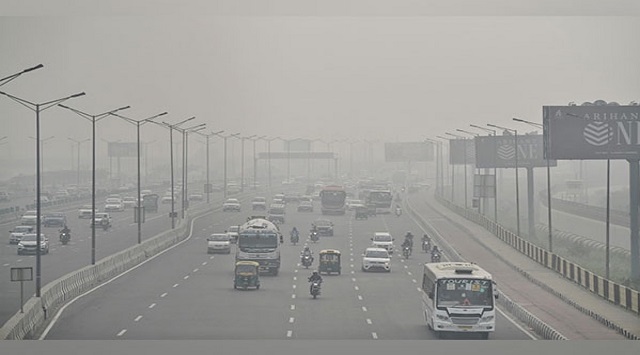Biomass burning, vehicle pollution, secondary aerosols worsened Delhi’s air quality in Nov
Biomass burning, secondary aerosols and vehicles are stated to be the main contributors to the worrying air quality of Delhi.
New Delhi: The Real-time source apportionment study data has highlighted biomass burning, secondary aerosols and vehicles as some of the main contributors to the worrying air quality of the national capital in November this year.
According to the PM 2.5 Real Time Source Apportionment at Rouse Avenue (Supersite) data showed that between November 23 to 26 they have been contributing a major chunk to the pollution in the national capital.
The secondary aerosol, which are particles such as sulfate, nitrate, ammonium formed in the atmosphere from the interaction of various gases.
The secondary aerosol potential sources include powerplants, refineries, brick kilns, vehicles, industry, agriculture, organic waste decomposition, and open drains.
According to the portal on real-time source apportionment, the share of secondary inorganic aerosols to PM2.5 was 36 per cent on November 23, while next day it came down to 23 per cent and once again spiked to 29 per cent on November 25 and on November 26 it was 26 per cent.
According to the portal, the share of vehicles, which consists of the off and on-road vehicles, petrol, diesel, CNG-powered vehicles, and diesel generator sets to PM2.5 was 22 per cent on November 23, 26 per cent on 24 November, 24 per cent on November 25 and 29 per cent on November 26.
Going by the portal, the share of biomass burning, which includes wood, dung, agriculture residue, and plant branches and leaves to PM2.5 was 27 per cent on November 23, 40 per cent on November 24, 37 per cent on November 25 and 30 per cent on November 26.
The study project was started by the Delhi Pollution Control Committee in collaboration with IIT Kanpur, IIT Delhi and TERI.
Meanwhile, the overall air quality in Delhi continues to be in the ‘very poor’ category with the AQI at 369 on Monday evening, according to data from the System of Air Quality and Weather Forecasting And Research (SAFAR).
In the national capital, Anand Vihar entered the ‘very poor’ category with PM 2.5 at 332 and PM 10 at 244, in the poor category, while the CO reached 70, in the satisfactory category while NO2 was at 43, in the good level, as per the Central Pollution Control Board at 6 p.m.
The AQI between zero and 50 is considered ‘good’; 51 and 100 ‘satisfactory’; 101 and 200 ‘moderate’; 201 and 300 ‘poor’; 301 and 400 ‘very poor’; and 401 and 500 ‘severe’.




 Ms Kalinga
Ms Kalinga